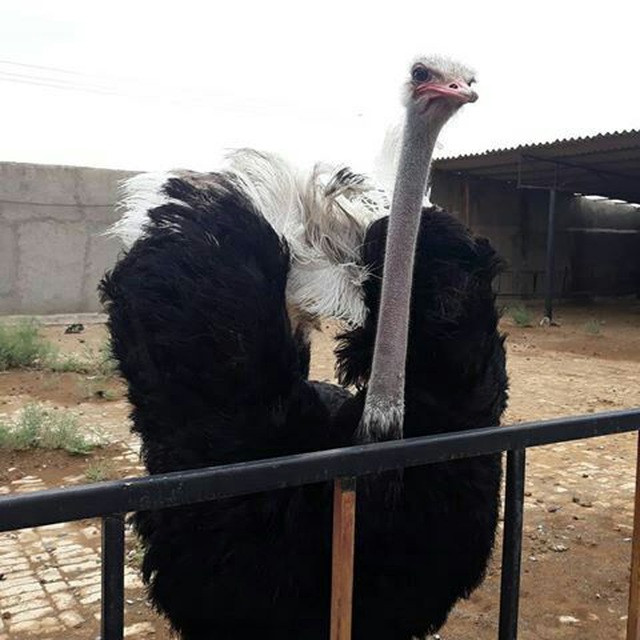Ostrich general content.
1- In nature, female ostriches sleep on eggs during the day and male ostriches at night.
2- A healthy ostrich that has had enough water excretes about 2.5 liters of urine daily.
3- The ostrich can only urinate while standing.
4- Sometimes the height of the ostrich reaches 3 meters and its weight reaches 175 kilograms.
5- Breathing with an open mouth, which occurs due to the high heat of the environment, does not lead to alkalosis in ostriches.
6- The breathing rate in an adult ostrich reaches 6-12 times per minute.
7- Normal breathing volume in adult ostriches at rest is 2.1-6.1.
8- There is no patella bone in the birds of the ostrich family.
9- The ostrich has 2 toes on each foot and 4 bands on each toe.
10- Ostriches do not have a stomach, but their large pre-stomach stores food.
11- There is no gall bladder in ostriches.
12- There are pairs of caecum in ostriches.
13- Accumulation with stones in the stomach and pre-stomach of ostriches is common.
14- In high air temperature, the breathing rate in ostriches reaches 40-60 times per minute.
15- The only hollow (air) bone in the ostrich is the femur.
16- In ostriches, only the left ovary and oviduct are active.
17- Veins that can be used to collect blood in ostriches:
A) Right jugular vein
b) Middle ankle vein
C) the median vein of the upper arm
18- Injecting drugs into the thigh muscles of ostriches should be avoided.
19- Testicles in ostriches do not produce sperm in non-breeding seasons.
20- The penis of the male ostrich does not have a urethra and does not play a role in the urinary system.
21- Male ostriches do not have secondary reproductive organs (supplementary glands).
22- In male ostriches, the testicles are located in pairs behind the abdominal air sacs in the ventral region and the apical end of the kidneys and deep in the body.
23- Growth speed in young ostriches depends on heredity, environmental conditions (management) and nutrition.
24- Ostrich’s heart rate at rest is 30-40 times per minute and up to 175 times per minute when running.
25- The contractions of the pre-stomach and the gravity of the earth cause food to move from the pre-stomach to the gizzard.
26- Fibers are digested in the ostrich digestive system by bacteria and the final product is volatile fatty acids.
27- When it is impossible to escape from the clutches of an attacking ostrich, the best defense is usually to lie completely on the ground.
28- The ostrich is very aggressive and dangerous during the mating season.
29- The suitable age for transporting ostriches is 3 to 8 months.
30- One of the means of tying ostriches is to use a cap.
31- Common vaccines used in ostrich farms
as follows
Anthrax, botulism, enterotoxemia, smallpox, Newcastle and influenza.
32- The most common anesthesia drug in ostriches is ketamine.
33- Deaths caused by swallowing hard and sharp objects are very common in ostriches.
34- Drugs and toxic compounds in ostriches include: furazolidone compounds, ionophore anticoccidiosis (such as monensin, salinomycin, narasin, lazalucid), thiabendazole, mebendazole and lindenurea.
35- One of the diseases that only ostriches can get among birds is scurvy.
36- Bad nutrition, stress and improper management cause a decrease in body immunity in ostriches.
37- The most important anti-parasitic drugs allowed in ostriches are avermectin, fenbendazole and oxyphenazole.
38- Although levamisole is a good drug for stimulating the immune system of ostriches, it sometimes causes digestive disorders and also causes rapid resistance in the parasite.
39- The effective drug on ostrich tapeworms is niclosomide and praziquantel 5.2%.
This post is written by Mohamadjkonjkav
